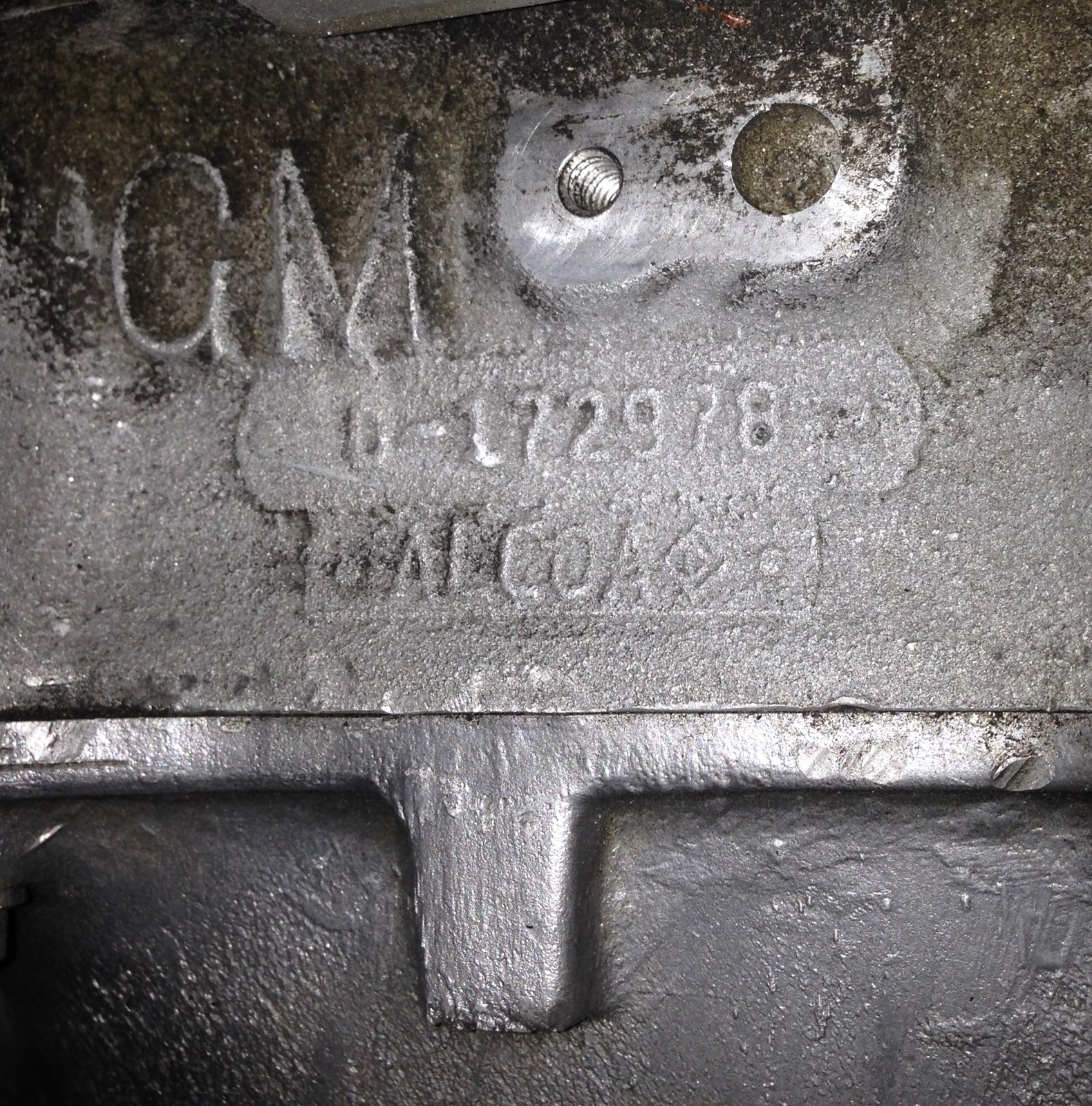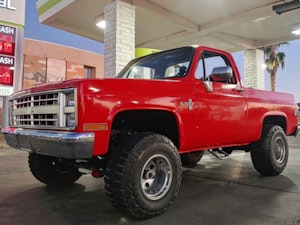Media | Articles
How a rare, experimental, aluminum V-8 from the Duntov era found its way into a Corvair
The small-block Chevrolet was still in its infancy when Zora Arkus-Duntov thought to ditch the iron casting and go to a more weight-conscious aluminum construction. These V-8 engines are pieces of small-block history, cast in 1959 for the Chevrolet Engineering Research Vehicle (CERV) project that became the first seed of the mid-engine Corvette. Officially unveiled in 1960, CERV I was a testbed—an open-wheel, mid-engine chassis that helped shape Chevy performance and the Corvette for years to come.
Strangely enough, an authentic GM aluminum small-block from this era now lives in the back of a Corvair, of all things. How does that even happen, you might be wondering? I hunkered down and performed some detective work to find out.
For context, I am a Corvair enthusiast who has long-lusted after building a Crown Manufacturing V-8 car. Even during the height of its production, Crown was a small outfit in Costa Mesa, California, which only built parts for mad scientist Corvair enthusiasts. Crown Manufacturing is now largely defunct after being sold to fellow performance parts manufacturer Otto in the 1970s, and then finally to Clarks Corvair in Massachusetts in 1991.
The Crown V-8 conversion entails tossing out the air-cooled flat-six out along with the backseat and placing a small-block Chevrolet V-8 just inches behind the driver’s right elbow. Even a fairly lazy small-block easily eclipses the maximum 180 horsepower offered in the stock Corvair, so the swap made sense for those looking to make a street sweeper sleeper in an era where turbocharger tech was primitive and support for the offbeat Corvair engine was slim.
Marketplace
Buy and sell classics with confidence

These conversions are not uncommon, but while perusing my favorite Corvair-focused online forum, I watched a video where a guy named Paul Siano walked around his red 1966 Corvair and made a casual reference the engine in it—an aluminum-block 283. From 1959.
I scoffed, thinking it was just bluster. Then it stuck with me. Ate at me. Nobody was correcting him in the comments. I had to know if the engine block in this ‘Vair was for real.
The value of scrap
Siano is from Michigan, though he currently resides in Florida. His 1966 Corvair has been a part of his life since he purchased it new on the showroom floor. It was adequate for his daily driving, but when he rode in a friend’s Crown V-8 conversion, there was no going back. He started the conversion on his red Corsa in the early 1970s, with a 327-cu-in V-8 taking up residence in the back seat.

The 327 wiped a lobe on the camshaft, making way for a 302 sourced from a Camaro Z/28. Still, the greatest engine was yet to come, and it would come from an unexpected place. He had friends who made more than a little cash by picking over the scrapyards in the surrounding area and buying parts and pieces from the piles of metal headed for the smelter. When one of those friends came up with an aluminum 283, Siano bought it from them for his Corvair.
“I have seen a lot of things that some people don’t think exists,” said Siano told me over the phone. “Being in the Detroit area during that time, there was all kinds of stuff that the manufacturers sent to scrap for one reason or another. I just happened to be in the right place at the right time.”

Paul doesn’t recall the exact year he purchased the bare engine block, and he didn’t do anything with it right away. In fact, it was nearly 35 years later when he built the engine up for installation in the red coupe, still unaware of the engine’s history. Once it was finished, he dropped it into the Corvair and drove it around to some local car shows. It wasn’t until a discussion at one of those meetups in 2015 that Siano learned that his Corvair’s alloy heart might be something more than just an engine.
A Corvette connection

Zora Arkus-Duntov had a knack for forward thinking and experimentation. In CERV I’s lifespan from 1959 to 1964, Duntov tried out seven powertrains, ranging from a twin-turbocharged V-8 to an all-aluminum 283 V-8, the latter of which was the first engine in the chassis. GM Heritage Collection indicates that the first aluminum small-block in the CERV I had 350 horsepower, which matched the engine’s 350-pound weight. The engine block, cylinder heads, water pump, starter body, flywheel and pressure plate were all composed of aluminum.
The GM Heritage Collection confirmed that the original aluminum engine from the CERV I is no longer in company hands, although it couldn’t say for sure that Siano’s engine was the real deal. These experimental engines were just that—experiments. They weren’t held sacred, which means GM wasn’t fastidiously tracking their whereabouts once their usefulness had expired.
Is the proof in the casting?
Still, it’s hard to imagine something important as one of the first original aluminum small-blocks had so easily found its way into the wild. To help paint a picture, Paul kindly provided me with a photo of the casting on the side of the block.

The raised GM casting in the aluminum, along with the ID number starting with 0- matches up with the style of a known “off-the-books” project—the 1963 Chevrolet big-block “Mystery Motor.” That engine was built for racing, NASCAR to be specific, but was also a testbed for advancements that would eventually work their way to production engines. Screw-in rocker studs are one example.
One more intriguing detail—the block has ALCOA markings just below the casting number. Paul was under the impression that the blocks were cast by Alcoa, which is a leader in aluminum technology. I reached out to Alcoa to see if it had any information regarding these old V-8s, and the company responded that it was more likely that Alcoa supplied the material and GM cast the block. Using a third-party’s material to cast engine blocks is something GM has done in the past, for example, with the infamous aluminum Vega engines.


The information is there, this engine is connected to the CERV I and Zora Arkus Duntov’s skunkworks of the late 1950s. At the same time, there is zero definitive evidence that suggests this is the engine plucked from CERV I. Best guess? This is a pup from the litter, but it ain’t Balto.
The cost of history
After learning of the connections his 283 had to GM history in 2011, Paul formulated a plan to remove it from the car and replace it with another lightweight engine—a modern GM Bowtie aluminum block, which will up the displacement to 350 cubic inches. He enjoys driving the car too much to have to worry about damaging a piece of small-block history in his back seat. The swap has yet to take place, but in the meantime Paul is being just a little more careful with the engine.
Though he has listed the block for sale a few times in the past, Paul now plans to hold onto it. “It is not an investment, but something that is just too neat to let go of for now,” he says.
Considering it’s a hunk of history from one of the most iconic engine families of all time, “neat” is a gross understatement. To think that this experimental block ever lived inside a Corvair probably sounds a bit like hanging a da Vinci in your drafty garage, but I think it’s outstanding. Chevrolet went way out on a limb with the Corvair, just as it did with the aluminum small-block. In a weird way, it’s a match made in heaven.









